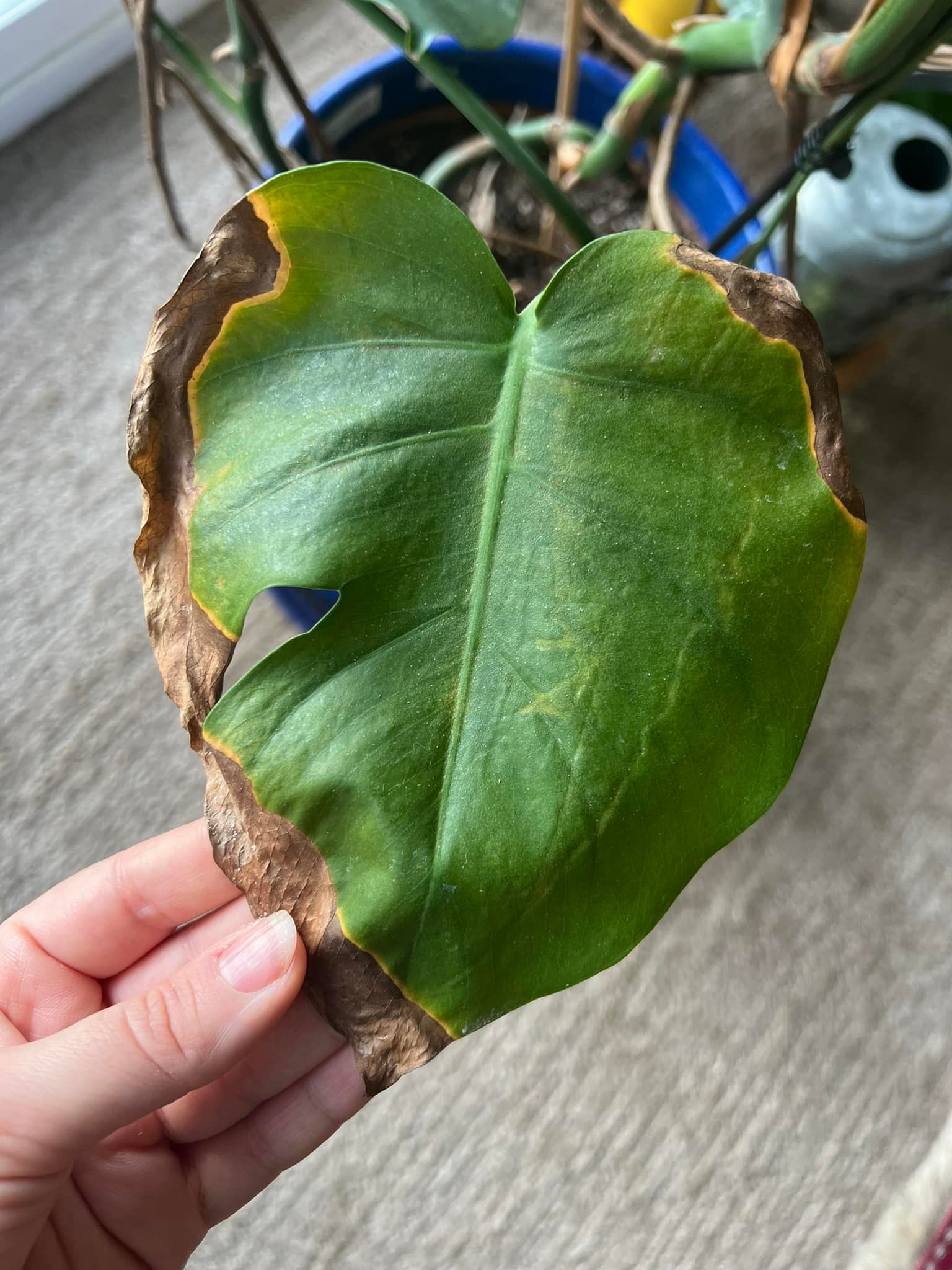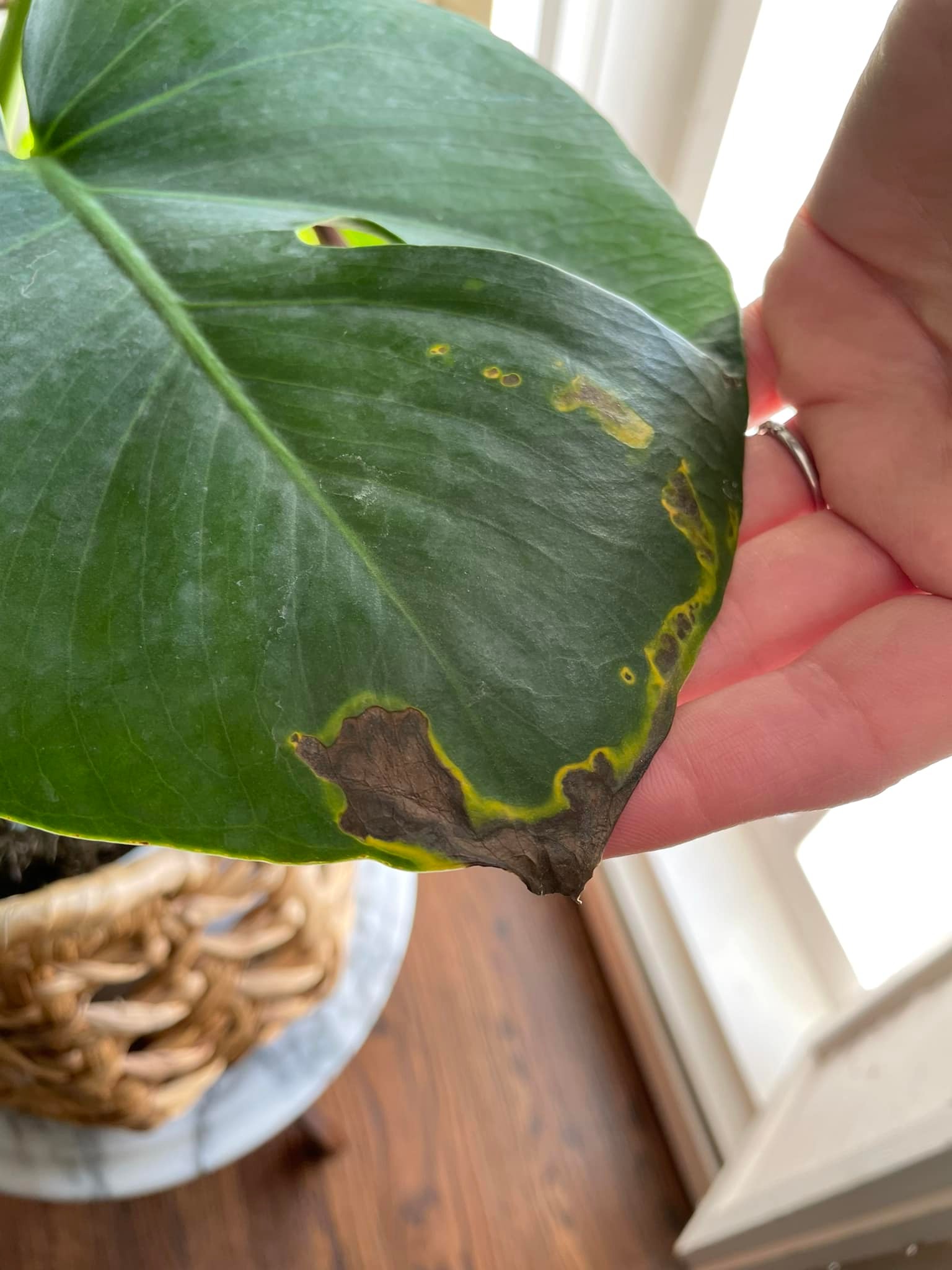
Have you noticed unsightly brown spots on your Monstera plant’s leaves? If so, you’re not alone! Monsteras are beloved for their lush, tropical foliage, but brown spots can signal underlying issues that need urgent attention. From overwatering to pests, several factors contribute to this problem. The good news? There are quick and effective fixes to restore your Monstera’s health and beauty.
In this article, we’ll explore the most common causes of brown spots and provide eight easy solutions to help your plant thrive.
I’ve provided detailed information in the article below to help with your concerns, However, if you still have questions or need more help, feel free to share photos of your plants or describe your issue on our Facebook Group. Just join the group and leave a comment on the most recent post — either I or someone from the community will respond as soon as possible. We also share helpful and unique plant care tips daily, so consider joining the group to stay updated!
What Causes Brown Spots on Monstera Leaves?

Before jumping into solutions, let’s understand the common causes of brown spots on Monstera plants:
- Overwatering or Root Rot – Too much moisture can lead to fungal infections and root rot.
- Underwatering – Dry soil can cause crispy, brown patches on leaves.
- Low Humidity – Monsteras thrive in humid environments, and dry air can cause stress.
- Pests and Insects – Spider mites, thrips, and scale insects can damage leaves.
- Sunburn – Too much direct sunlight can scorch the leaves.
- Nutrient Deficiency – Lack of essential nutrients like magnesium and calcium can lead to discoloration.
- Fungal or Bacterial Infections – Leaf spot diseases can create brown, mushy areas.
- Poor Drainage – Stagnant water in the pot can cause root and leaf problems.
Now that we know the causes, let’s look at the best solutions!
8 Quick Fixes for Brown Spots on Monstera Plant Leaves
1. Adjust Your Watering Routine
Is your Monstera getting too much or too little water? Both can cause brown spots.
- Overwatering: Check if the soil is soggy or has a foul smell. If so, reduce watering and let the soil dry slightly between waterings.
- Underwatering: If the soil feels dry and compact, increase watering frequency.
- Use the finger test—stick your finger an inch into the soil. If it’s dry, it’s time to water!
2. Improve Drainage
Poor drainage leads to waterlogged roots and fungal infections.
- Ensure your pot has drainage holes.
- Use a well-draining soil mix with perlite or orchid bark.
- Avoid letting water sit in the saucer under the pot.
3. Maintain Proper Humidity Levels
Monsteras love humidity! If the air in your home is too dry, brown spots may appear.
- Use a humidifier to keep humidity levels around 60%.
- Mist your plant occasionally (but avoid over-misting, as it can invite fungal issues).
- Place a water tray with pebbles under the plant to boost humidity naturally.
4. Check for Pests and Treat Them Immediately
Pests like spider mites, thrips, and scale insects feed on plant sap, causing brown spots.
- Inspect the leaves, especially the undersides, for tiny insects.
- Wipe the leaves with a mild soap solution or neem oil.
- Use insecticidal soap if the infestation is severe.
- Introduce beneficial insects like ladybugs if growing plants outdoors.
5. Avoid Direct Sunlight Exposure
Monsteras enjoy bright, indirect light. Direct sun can burn the leaves, leading to crispy brown spots.
- Move your plant to a bright, shaded spot.
- Use curtains or sheer blinds to filter strong sunlight.
- Rotate your plant regularly to ensure even light distribution.
6. Feed Your Monstera with Nutrient-Rich Fertilizer
Nutrient deficiencies can cause brown spots, yellowing, and weak growth.
- Use a balanced liquid fertilizer (such as 20-20-20) once a month during the growing season.
- Add calcium and magnesium supplements if you notice leaf discoloration.
- Avoid over-fertilizing, as this can lead to salt buildup in the soil.
7. Prevent and Treat Fungal and Bacterial Infections
Fungal infections like leaf spot disease create dark brown or black patches on leaves.
- Prune affected leaves to stop the spread of disease.
- Use a fungicide or natural remedy like diluted hydrogen peroxide.
- Improve air circulation by placing your plant in a well-ventilated area.
- Avoid overhead watering—always water at the base of the plant.
8. Repot If Necessary
Sometimes, your Monstera may need a fresh start!
- Repot if the roots are overcrowded or rotting.
- Use a pot 1-2 inches larger than the current one.
- Replace old soil with fresh, well-draining mix.
- Trim off any mushy or black roots before repotting.
How to Keep Your Monstera Healthy and Spot-Free
Prevention is always better than cure! Follow these tips to keep your Monstera thriving:
✔ Water only when the top inch of soil feels dry.
✔ Use a humidity tray or humidifier to maintain moisture levels.
✔ Keep your Monstera in bright, indirect light.
✔ Check for pests regularly and act fast if you see any.
✔ Clean leaves with a damp cloth to remove dust and potential pests.
✔ Fertilize monthly during the growing season but avoid overfeeding.
✔ Ensure good air circulation to prevent fungal infections.
✔ Repot every 2-3 years or when roots outgrow the pot.
